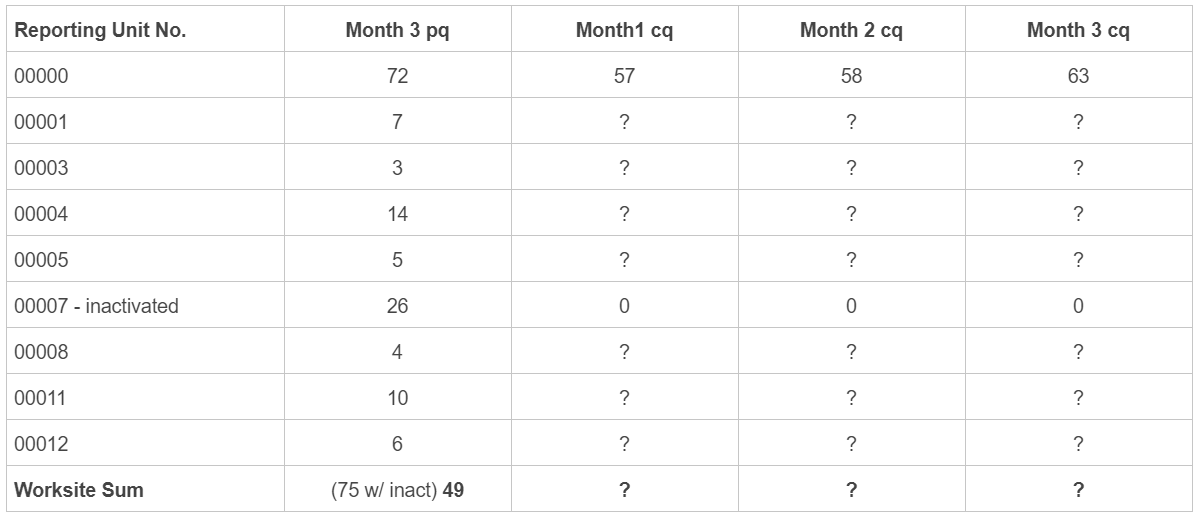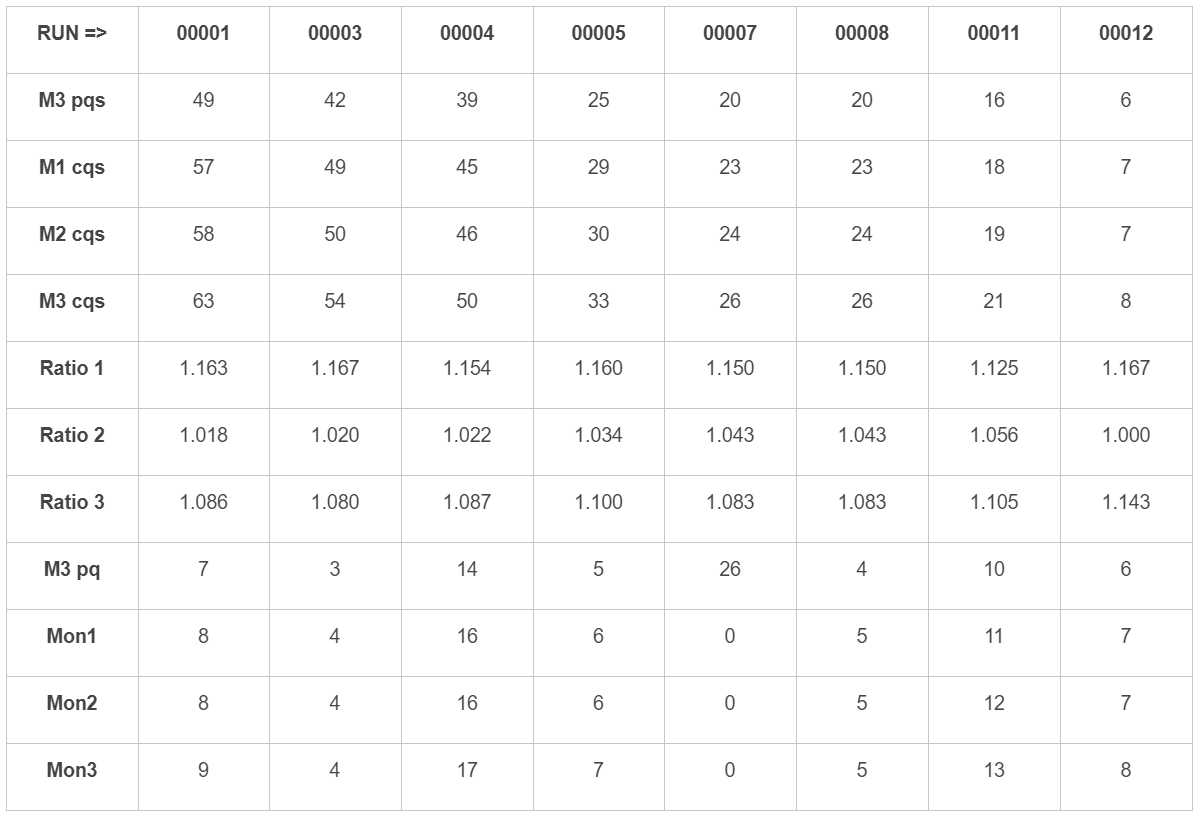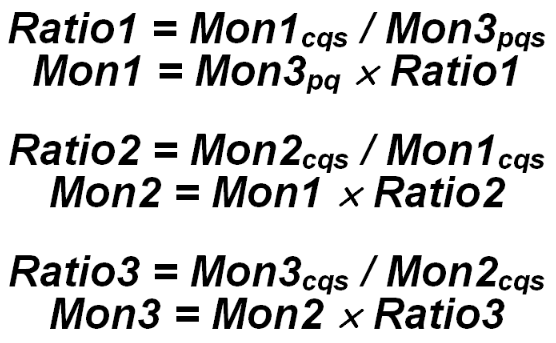10 worksite employment proration example
Worksite Employment Proration Example
The following demonstrates the methods used in the estimation of employment for a delinquent family of worksites. The family to be used had fully reported employment, both for worksites and the master account, in quarter 2002/1. There were eight worksites in the family, but reporting unit #7 was closed at the end of the quarter. The 2002/2 master account employment has been reported, but the worksite records require estimation. The following table summarizes the known and unknown data elements for the family.
The master account's third month prior quarter employment (72) disagrees with the worksite sum for the same month (75 when the inactivated worksite is included; it is even farther off when the inactivated worksite is removed (49 versus 72)). But the worksite sum is used for the prior quarter rather than the master account's value. So the initial ratios for month-to-month employment become 57/49 (Mon1cq / åws Mon3pq), 58/57 (Mon2/Mon1), and 63/58 (Mon3/Mon2). These are applied to RUN #1's prior quarter third month employment (7) and rounded to give the estimated first month's employment, found from:
From this formula, the second and third employment months can be estimated. Mon2 (May) is found by multiplying the first month (April) estimate (8) by the Mon2/Mon1 estimation ratio (58/57), for a rounded value of 8 (from 8.140...); the third month (June) is determined by using the estimated second month (8) times the Mon3/Mon2 estimation ratio (63/58) which also rounds to 9 (from 8.6897). Because of the rounding, the precise summed level ratio cannot be maintained for all worksites, unless cumulative rounding is allowed to crop in. Hence the need for the autopilot mechanism of realigning the ratio based on the estimates computed thus far.
The three estimated monthly values (8, 8, and 9, respectively,) are subtracted from what had been the master account's monthly employment fields, leaving 49, 50, and 54, respectively. The worksite's prior quarter third month employment value is deducted from the pqs sum to give a new value of 42. The process is then repeated on each of the other worksites (exempting the inactivated reporting unit #7) using the revised employment sum values. The table below demonstrates how this works:
The above table shows the figures involved in preparing the estimates (last three rows) for each of the worksites. The first row under the reporting unit numbers is the summed prior quarter third month employment with any already-processed worksites' involvement in this sum removed from the total (subtracting the "M3 pq" value before the next "M3 pqs" value is displayed). The next three rows are initially the employment fields from the master account, but these have any already-enacted estimates removed from the equivalent fields in the bottom three rows. The three rows labeled "Ratio 1", "Ratio 2", and "Ratio 3" are the results of dividing M1cqs/M3pqs, M2cqs/M1cqs, and M3cqs/M2cqs, respectively. These form another version of the equations already described, so that the ratios form two-part equations, namely:
Whenever the estimated value for a month's employment is lower than what was calculated (due to rounding to the nearest integer), the ratio associated with that month's estimate is raised marginally for the next worksite estimate. This makes it more likely the next estimate will be rounded upward. In the same way, an upward-rounded value decreases the ratio value to help subsequent estimates to round downward to compensate. This oscillation of the ratio is basically a glide path that keeps the worksite proration process on track. The last worksite's processing will match worksite employment to the residual left over from the master precisely, providing a perfectly balanced multi-worksite family.
Related Links



